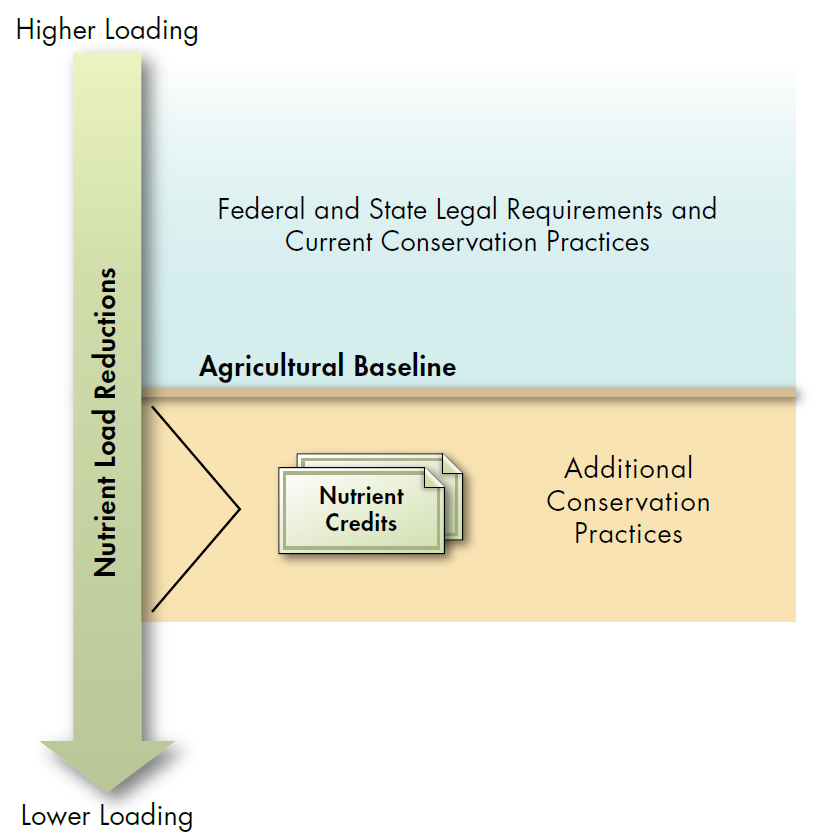Agricultural Engagement
Related Research
EPRI researchers routinely collaborate to address complex, inter-related issues associated with water & air quality in the United States. The following EPRI projects represent work that relates to and supports the Ohio River Basin Trading Project.
- Water Quality and Watershed Protection

- Water Availability and Resource Risk Management

- Effluent Guidelines and Water Quality Management

- Global Energy and Climate Policy Costs & Benefits

- Air Quality Assessment of Ozone, Particulate Matter, Visibility, and Deposition

- Developing GHG Emissions Offsets by Reducing Nitrous Oxide Emissions in Agricultural Crop Production: Experience Validating a
New GHG Offset Protocol

- EPRI Water Prism Decision Support System

Snapshot of Agriculture in the 3 pilot trading states
Agricultural lands cover about 35% of the Ohio River Basin and are primarily located in Kentucky, Ohio, Indiana, and Illinois. The latter three states have prime farmland soils ideal for growing crops in 50 percent or more of their farmland areas. Agriculture includes various row crops (corn, soybean, wheat, hay), livestock, poultry, and dairy, fruit orchards and other agricultural products. EPRI is proud to be working with Indiana, Ohio, and Kentucky during the pilot period of this project.
Listening to Producers and Soil and Water Conservation Districts
Between 2009-2010, EPRI project collaborators, American Farmland Trust and the Ohio Farm Bureau Federation, convened four listening sessions with producers and Soil and Water Conservation Districts (SWCDs) in Ohio (Troy and Sardinia) and Indiana (Bluffton and Terre Haute). Additional listening sessions were convened in Ohio and Minnesota as part of other projects.
EPRI Reports from listening session:
- Barriers and Solutions for Farmer Participation in the Ohio River Basin Water Quality Trading Program
 (1023642)
(1023642) - Ohio River Basin Trading Project Agriculture Stakeholder Listening Sessions: Sardinia, Ohio, October 14th, 2011
 (1023133)
(1023133) - The Ohio River Basin Trading Project: Designing for Agriculture
 (1021452)
(1021452) - Ohio River Basin Trading Project Listening Workshops: Wabash River Watershed, Indiana March 8-9, 2010
 (1021543)
(1021543) - Ohio River Basin Trading Project Soil & Water Conservation District (SWCD) Informational Meeting: Ohio Department of
Natural Resources Columbus, Ohio July 6, 2010
 (1021539)
(1021539)
From these interactions with producers, we identified the following characteristics for successful agriculture engagement in an interstate pilot project:
- A minimum of paperwork with simple 1-2 page contracts;
- Mechanisms to avoid swings in cost-share reimbursement based on variable credit valuation and prices;
- Options for dealing with non-performance issues;
- Access to technical assistance;
- Information about how installed BMPs will affect crop yields;
- Synergy with existing cost-share programs;
- Resolution for fair access for both “early adopters” and “bad actors;”
- The use of trusted intermediaries (to aggregate credits, monitor and verify practices); and
- Consistent and transparent rules.
Critical Pilot Project Decision Points Related to Agriculture
- Identifying and engaging groups to act as aggregators, technical assistance providers, day-to-day BMP monitors, and credit verifiers who are trusted by producers;
- Determining eligibility and agricultural baseline requirements
 (7.2 MB) (i.e. the level of stewardship
producers would be required to meet prior to selling credits);
(7.2 MB) (i.e. the level of stewardship
producers would be required to meet prior to selling credits); - Finding an optimal way to work with existing federal and state cost-share conservation program;
- Whether the market needs to engage absentee landowners;
- How trading ratios are established; and
- How risks and liability are shared.

How the Pilot Trades Address Issues Identified by Producers
A minimum of paperwork with simple 1-2 page contracts. The SWCDs fill out a 4 page application form and a baseline eligibility form with the farmer and complete a project farm inventory and evaluation form. The SWCDs have a 3 page contract with the farmer. See Project Templates for an example.
Mechanisms to avoid swings in producer payments resulting from variable credit prices. The farmers are paid up to 75 percent of the costs of installing the pre-approved best management practice with a limit of $10,000. EPRI owns the resulting credits and holds all risk related to the ability to sell the credits.
Options for dealing with non-performance issues. Farmers, in consultation with the SWCD, are expected to take all appropriate precautions to prevent the failure of a practice, and to initiate immediate and appropriate corrective
action upon discovery of a failure. The producer is subject to recovery of the funds provided. The program has set aside a buffer pool of credits to address these types of problems so that the overall program maintains integrity.
Access to technical assistance. The SWCDs and USDA NRCS staff provide technical assistance to farmers which includes conservation planning and engineering help.
Information about how credited BMPs will affect crop yields. The farmer is responsible for assessing impacts on crop yields, in consultation with their SWCD.
Synergy with existing cost-share programs. Federal, state and local incentive programs (providing cost-share funding) can be used to achieve current conditions but cannot be used to generate credits. Some of the SWCDs are identifying
potential farmers by looking at unfunded applications from farmers for the USDA NRCS Environmental Quality Incentives Program.
Use of trusted intermediaries (to aggregate credits, monitor and verify credited BMPs). The SWCDs are acting as credit aggregators, working with farmers to design and install BMPs and bring credits to market. The state agencies will be verifying and monitoring the BMPs
Consistent and transparent rules. The signed trading plan ![]() (7.2 MB)
provides the framework for the pilot trading period and is widely available.
(7.2 MB)
provides the framework for the pilot trading period and is widely available.
Issues surrounding leased farmland and absentee landowners. At least one of the pilot trades will involve practices on leased farmland so the project can learn more about how to deal with this issue.
Best Management Practices Approved for the Pilot Period
- Cover crops
- Nutrient management
- Vegetative filter strips
- Grass waterways
- Livestock exclusion fencing
- Heavy use protection areas
- Conservation tillage



